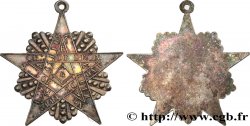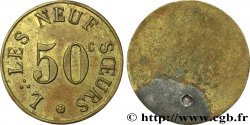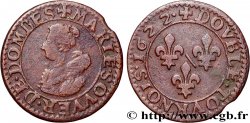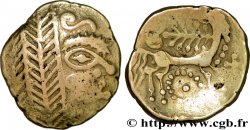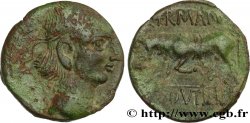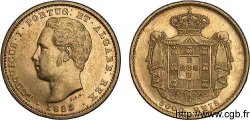fjt_1017946 - FREEMASONRY BONAPARTE 1852
170.00 €(Approx. 198.90$ | 147.90£)
Quantity
Add to your cart

Type : BONAPARTE
Date: 1852
Metal : gilt copper
Diameter : 33 mm
Orientation dies : 12 h.
Weight : 11,52 g.
Edge : lisse
Puncheon : sans poinçon
Coments on the condition:
Patine hétérogène avec des traces de rayures et points d’oxydation. Joli brillant de frappe encore visible
Catalogue references :
Obverse
Obverse legend : (RECTANGLE REPRÉSENTANT UN PLAN SIMPLIFIÉ D’UNE LOGE) BONAPARTE / FONDEE EN 5852.
Obverse description : Abeille.
Reverse
Reverse legend : JETON DE PRESENCE ***.
Reverse description : Equerre et compas entrecroisés et entrelacés avec une couronne d’acacia, autour d’un G.
Commentary
Loge de la famille impériale comptant 160 membres regroupant alors Jérôme Napoléon Bonaparte, Charles Bonaparte mais aussi les rois de Danemark et de Suède ainsi que des diplomates du monde entier. Marc Labouret nous indique que la loge repasse à 65 membres en 1862 et devient la loge de la France maçonnique. Puis s’éteindra en 1871. Marc Labouret précise à juste titre que sous la première phase du Second Empire, la Franc-maçonnerie est contrainte à la soumission, c’est la raison pour laquelle de nombreuses loges fermes. Dès 1860, les loges républicaines fleurissent à nouveau.
Lodge of the imperial family with 160 members, including Jérôme Napoléon Bonaparte, Charles Bonaparte, but also the kings of Denmark and Sweden, as well as diplomats from around the world. Marc Labouret tells us that the lodge returned to 65 members in 1862 and became the lodge of Masonic France. Then it died out in 1871. Marc Labouret rightly points out that during the first phase of the Second Empire, Freemasonry was forced into submission, which is why many lodges closed. From 1860, republican lodges flourished again.
Lodge of the imperial family with 160 members, including Jérôme Napoléon Bonaparte, Charles Bonaparte, but also the kings of Denmark and Sweden, as well as diplomats from around the world. Marc Labouret tells us that the lodge returned to 65 members in 1862 and became the lodge of Masonic France. Then it died out in 1871. Marc Labouret rightly points out that during the first phase of the Second Empire, Freemasonry was forced into submission, which is why many lodges closed. From 1860, republican lodges flourished again.








 Report a mistake
Report a mistake Print the page
Print the page Share my selection
Share my selection Ask a question
Ask a question Consign / sell
Consign / sell
 Full data
Full data